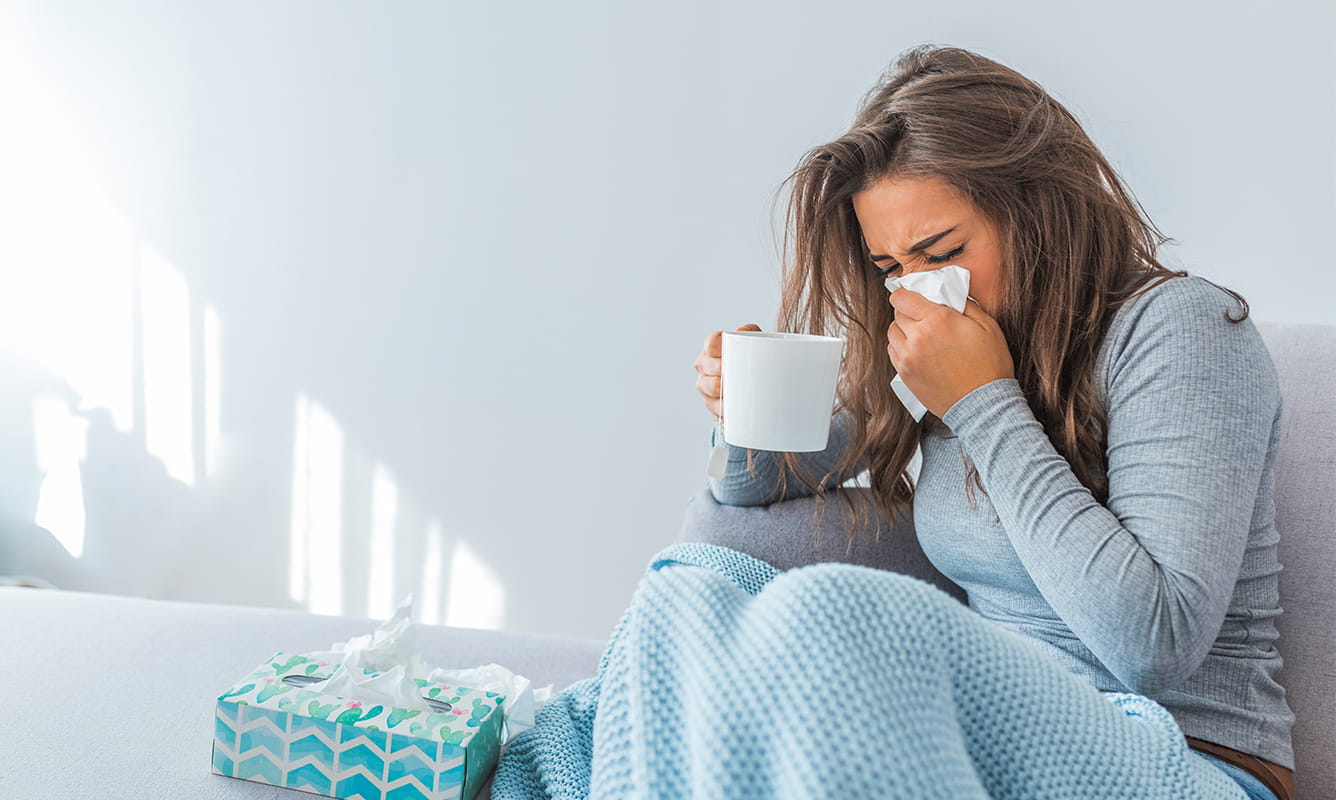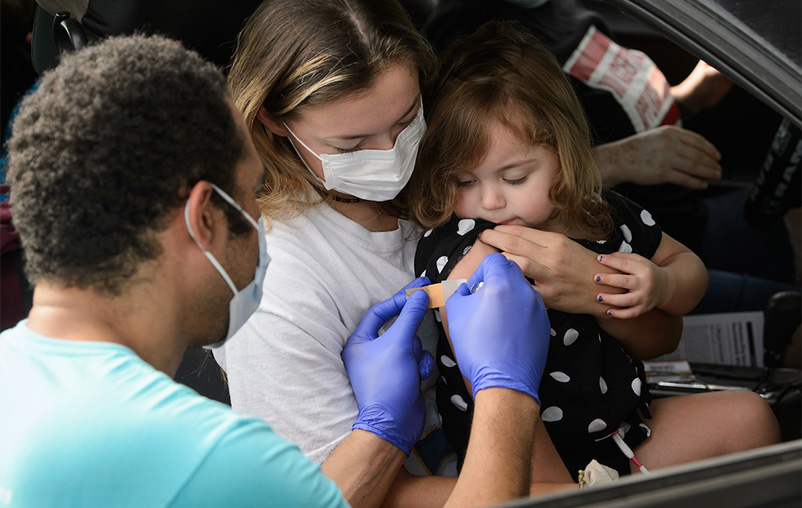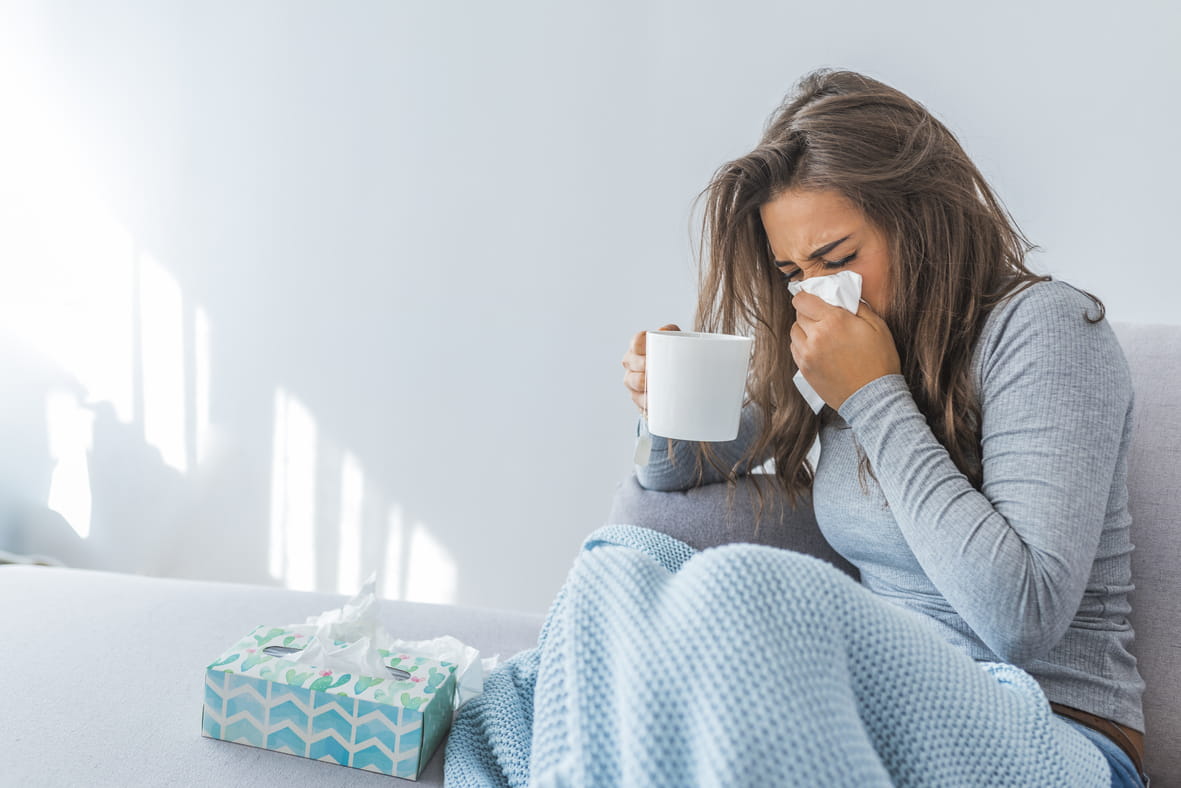Last updated on April 8, 2020 with information about a new CDC recommendation that members of the public should wear a cloth face covering when out in the community - especially for those living in areas with a high rate of community-based spread of novel coronavirus.
If you’re looking for an image that screams coronavirus, it might be the face mask. The thin-folded material stretched across a wearer’s nose and mouth, then fastened behind their ears, has become part of the uniform for millions who wear masks to cover up when they venture out.
People in our community and the nation are hopeful that wearing a face mask will help to prevent the transmission of COVID-19. The shelves in stores that usually stock them are empty. Some people are hoarding masks and selling them online for astronomical prices. They’ve become so scarce that people are using any kind of mask they can get their hands on – even resorting to making their own.
CDC now recommends public to cover their faces
The Centers for Disease Control and Prevention is now recommending that members of the public wear a cloth face covering when out in the community – when social distancing is challenging to maintain. Wear a face covering when going to the grocery store, pharmacy or other similar settings. The CDC states that this extra measure should be especially taken in parts of the country where there’s a high rate of community-based transmission of COVID-19.
What kind of masks are available and who should wear them?
There are two main types of medical masks:
Surgical masks, also called face masks, are usually made of pleated paper or other non-woven material. They're worn by surgeons to prevent their fluids, such as coughs or sneezes, from contaminating the operating area. They fit loosely and are not designed to filter out the smallest airborne particles.
N95 respirators, another type of mask, must be sized to the wearer so they fit snugly around the mouth and nose. The N95 in the name refers to the fact that they filter out 95% of airborne particles. These masks must meet specifications established by the National Institute for Occupational Safety and Health.
N95 respirators are specifically designed for healthcare workers who are in close proximity to infected people. These masks are used to protect workers from exposure to diseases like tuberculosis and measles because they filter out tiny particles that can travel through the air.
Health care workers wear these kind of masks, or respirators, before treating coronavirus positive patients. Medical professionals are trained in the proper use, removal, cleaning and disposal of these masks. When fitted properly, the N95s fit so snugly, they can’t be used by men with beards.
Masks alone don’t protect against novel coronavirus
The CDC is continuing to study and evaluate the spread and effects of the novel coronavirus. They have indicated that recent studies show that a large percentage of people with coronavirus don’t have symptoms. And they’re also saying that even those who eventually present with symptoms – those people who are in the pre-symptomatic phase can transmit the virus to those around them before showing symptoms.
Remember you can get the virus from standing near someone who is speaking, coughing or sneezing even if they’re not showing obvious signs of being ill. The CDC is repeating over and over, stay 6 feet apart. They’re encouraging people to use homemade cloth face coverings to help slow the spread of the virus and to prevent people who have the virus - but don’t know it – from spreading it to others.
This is recommended in combination with continually washing your hands, keeping your surrounding surfaces clean and avoiding people who you know are sick. They urge the public to keep in mind that surgical masks and N95 respirators are critical supplies greatly needed by medical staff and first responders.
In San Antonio, Metro Health is recommending that Bexar County residents, aged 5 and older, should cover their nose and mouth with a mask or some type or bandana when going out in public.
The World Health Organization has not yet recommended universal masking
At this time, the WHO has not updated their recommendations on wearing masks, still recommending that healthy people wear masks only when they’re taking care of people who have or are suspected of having COVID-19. It’s not so much a contradiction as a precaution, said Dr. Jason Bowling, a University Health epidemiologist.
“WHO didn’t recommend universal masking because they didn’t want people to rely on that instead of hygiene and social distancing,” Dr. Bowling explained. “Mindful practice of both provides optimal protection,” he emphasized.
What is the correct way to wear a mask?
If you’re wearing a mask, it’s important that you know how to put it on, take it off and dispose of if correctly. The World Health Organization has these recommendations:
- Before putting on a mask, clean your hands with an alcohol-based sanitizer or wash them thoroughly with soap and water.
- Cover your mouth and nose with the mask, and do your best to eliminate gaps between the mask and face that would allow germs to enter.
- Avoid touching the mask while wearing it. Sanitize your hands if you do.
- Do not reuse a face mask. Replace it as soon as it is damp.
- When removing the mask, do not touch the front of it where germs may have collected. Remove it from behind using the ear loops. Then throw it out immediately and clean your hands.
DIY face masks
The spread of COVID-19 has become so great that even the surgeon general is now showing American citizens how to make a face covering out of cloth to help defend against the transmission of this infectious disease.
We see people wearing masks of all kinds. Remember, whatever type of face covering or mask you use – it’s not effective if you touch it and move it off your mouth and nose down to your chin and then move it back again. Once it’s in place, leave it in place until it’s time to throw it away or to clean it.




